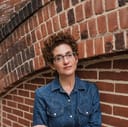Stay in the Loop
BSR publishes on a weekly schedule, with an email newsletter every Wednesday and Thursday morning. There’s no paywall, and subscribing is always free.
Historic pieces, modern practices, and the healing power of art
The Barnes presents Water, Wind, Breath: Southwest Native Art in Community

The first exhibition in the Barnes Foundation’s centennial year features historic and contemporary Southwest Native art. Water, Wind, Breath: Southwest Native Art in Community features objects from the collection as well as works by contemporary Native American artists. Co-curated by associate curator-in-charge at the Barnes Lucy Fowler Williams, senior keeper of American Collections at the University of Pennsylvania Museum of Archaeology and Anthropology, Philadelphia Jeremy A. Sabloff, and curator of ethnology at the Museum of Indian Arts and Culture in Santa Fe Tony Chavarria (Santa Clara Pueblo), Water, Wind, Breath aims to highlight the connections between historic pieces and modern practices.
Living traditions, living arts
Pieces include Pueblo and Navajo pottery, textiles, and jewelry. “We wanted to emphasize that these arts are part of the spiritual and physical well-being of these communities,” says Barnes associate curator Cindy Kang, while also conveying “that these are living traditions, living arts.” Equally important, the exhibition connects these living traditions to well-being and health, which have taken on greater importance as the pandemic endures.
Dr. Albert Barnes himself collected some of the exhibition’s items in New Mexico during the early 1930s. As Williams explained, Barnes made three visits to New Mexico with his wife, Laura, at the suggestion of her doctor. There, they stayed with Mabel Dodge Luhan, a patron and supporter of modern art he knew from salons in New York. A wealthy heiress, Luhan owned a large property in Taos where she and her husband Tony Lujan (Pueblo) hosted writers and artists including Georgia O’Keeffe, Marsden Hartley, D. H. Lawrence, and Aldous Huxley. They helped introduce Dr. Barnes to the area, which he called “a true paradise” in his thank-you letter.
According to Williams, “he was so inspired by this place and this landscape” with its “rich, artistic environment, adobe architecture, and handmade art.” Over the course of two years, Barnes developed great interest in Pueblo and Navajo art. He acquired brightly colored Navajo garments and rugs, over 100 pieces of silver-wrought jewelry (think bracelets, necklaces, and belts), and handmade Pueblo water jars, including some from the 19th and early 20th centuries. Barnes sought out worn pieces rather than pristine ones since the pottery is intended for use. “The creative practices of these arts are so embedded in origins and teachings in the Pueblo and Navajo communities,” Williams noted, and the exhibition’s organization reflects this concept.
Water, Wind, Breath is organized in five sections with an open, flowing layout with a plaza at the center that echoes Pueblo architecture. The pottery, textiles, and jewelry are on display, and there are works by 27 contemporary Native artists, some of whom work in the same mediums. Chavarria identified a favorite in The Last Boy on Earth (2019) by Diego Romero (Cochiti Pueblo), which draws from Pueblo style and comic books. Williams noted how contemporary weaver Melissa Cody (Navajo) uses the Germantown revival style and yarns, which reference the government yarn—some made in Germantown—issued to Navajo people during their internment at a US prison camp. Another section describes the annual cycle of dances in the Pueblo community, during which the textiles and jewelry are worn and the pottery is used to carry food.
Water, Wind, Breath is a particular triumph considering the logistical challenges of curating during Covid-19. As Kang explained, the Barnes conservators on site served as “the eyes, ears, and hands” of the specialists and curators, who worked remotely studying items that conservators cleaned, photographed, and dated. A dye analysis was completed to help with dating textiles, since this test can distinguish commercial dyes from those made from natural materials, like plants and insects. This exhibition may feature Native art, but it is for everyone.
“Everybody needs a break to see some beautiful art,” Williams noted, and Water, Wind, Breath is “about practice and making, and how that makes us all well—getting off the screen and doing something with your hands and making beauty of your own.”
What, When, Where
Water, Wind, Breath: Southwest Native Art in Community. February 20 through May 15, 2022, at the Barnes Foundation, 2025 Benjamin Franklin Parkway, Philadelphia. $5-$25. (215) 278-7000 or barnesfoundation.org.
Masks or face coverings are required for all, and a limited number of visitors will be permitted in the galleries at one time. Reservations are encouraged to facilitate contactless ticketing and payment, with timed ticketing to help facilitate social distancing.
Accessibility
The Barnes Foundation’s Philadelphia facility is accessible to individuals using standard-size wheelchairs. All floors are accessible by elevator and restrooms are wheelchair accessible.
Sign up for our newsletter
All of the week's new articles, all in one place. Sign up for the free weekly BSR newsletters, and don't miss a conversation.

 Melissa Strong
Melissa Strong